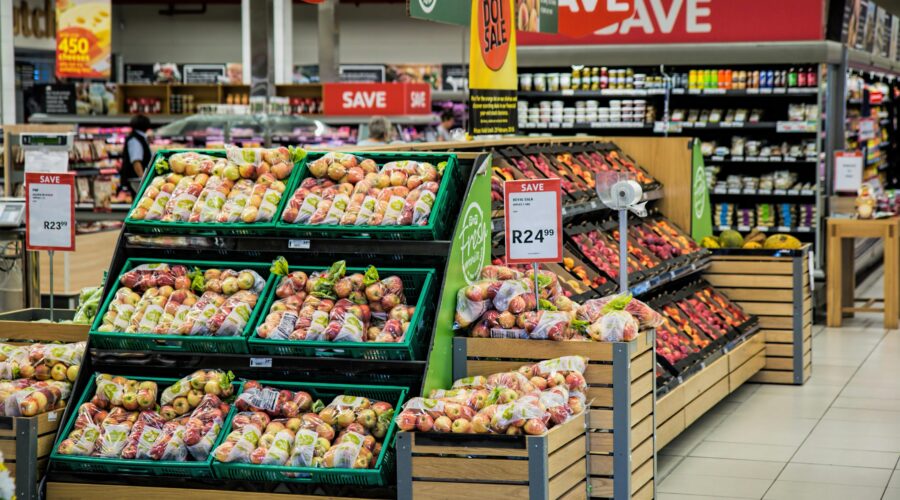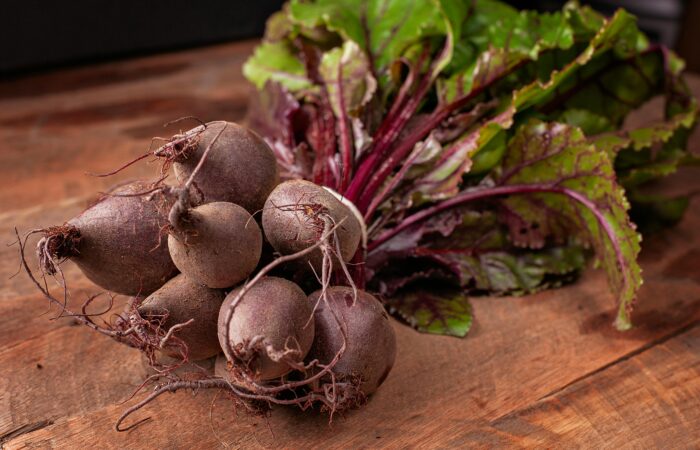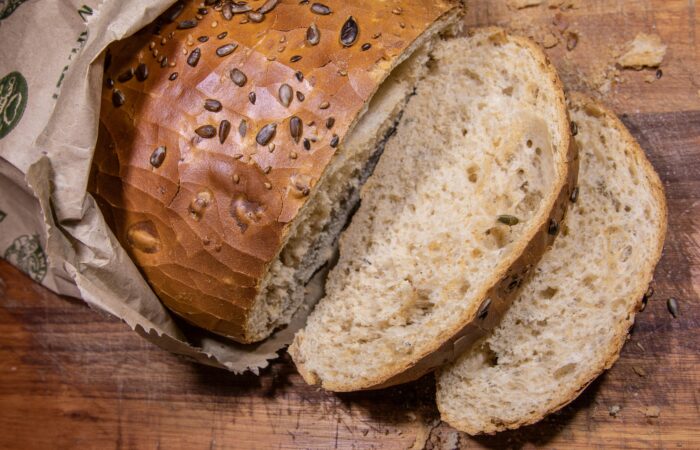Healthy eating is often painted as a luxury—something only attainable if you have a high-end grocery budget and unlimited time to cook. The reality, however, is that with the right planning and a few strategic choices, you can enjoy balanced, nutrient-dense meals without overspending. Whether you’re feeding a large family, living on your own, or managing a hectic schedule, this guide aims to equip you with practical tips to plan meals, shop smart, and make the most of your resources.
From choosing cost-effective protein sources and stocking your pantry with versatile staples, to reducing food waste and maximizing every item you purchase, you’ll learn that healthy eating doesn’t have to break the bank. You’ll also discover time-saving approaches—such as batch cooking, meal prepping, and using simple recipes that don’t require extensive culinary skills. With a bit of foresight and adaptability, you can craft a budget-friendly diet full of flavor, variety, and nutrition.
Read on to uncover how you can navigate the supermarket aisles confidently and enjoy meals that are both wallet-friendly and good for your body. After all, a balanced, wholesome diet should be something everyone can access—regardless of budget.
1. Introduction: Why Healthy Budget Grocery Shopping Matters
Healthy eating is often perceived as expensive or difficult to maintain. Many people believe they must sacrifice flavor, variety, or quality when they’re on a tight budget. However, the reality is that with the right strategies, you can enjoy a wide range of nutritious and delicious foods without depleting your wallet. Eating well on a budget involves knowledge, planning, and a bit of creativity.
1.1 Overcoming Common Misconceptions
A primary misconception is that healthy foods—such as fresh fruits, vegetables, lean proteins, and whole grains—are simply too pricey. This notion is partly fueled by the visibility of “health foods” that come in fancy packages and carry premium price tags. If you only look at specialty health markets or rely on convenience items labeled as healthy, your grocery bill might indeed soar. But real, unprocessed or minimally processed whole foods often cost far less per serving than heavily processed items. Beans, rice, oats, and seasonal produce—just to name a few—are all quite affordable and form the backbone of a nutritious diet.
1.2 The Benefits of Healthy Eating on a Budget
Budget-friendly, nutrient-dense meals offer more than just cost savings; they can also improve your overall health and well-being. A balanced diet abundant in vitamins, minerals, fiber, and healthy fats can help:
- Support energy levels throughout the day.
- Promote healthy body weight management.
- Reduce the risk of chronic diseases like heart disease and type 2 diabetes.
- Improve mood and cognitive function.
The money you save over time from reduced healthcare costs and fewer doctor visits can offset any initial effort or planning you invest in refining your grocery shopping habits.
1.3 How to Use This Guide
This guide is designed to give you the tools you need to buy the best foods for your body without feeling financial strain. We’ll discuss:
- Budgeting methods and how to set realistic grocery spending limits.
- Basic nutrition principles to help you identify cost-effective, nutrient-dense foods.
- Meal-planning techniques that optimize your time and resources.
- Tips for shopping smart, reducing food waste, and more.
By the end, you’ll have a clear idea of how to create a plan that works for your household. Let’s start by exploring how a modest budget and a healthy diet can coexist harmoniously.

2. Setting a Realistic Grocery Budget
Before walking into the store or planning a meal, you need to know how much you can reasonably spend on groceries. Understanding your financial constraints and your household needs is the foundation of healthy, budget-friendly grocery shopping.
2.1 Evaluating Your Current Spending
A helpful first step is tracking your current grocery expenses for at least a few weeks. Save receipts or use a budgeting app to categorize every food-related purchase. This will show you your baseline—how much money you typically spend and on what.
- Group similar items: Look at how much you spend on fruits and vegetables, meat, dairy, grains, snacks, and drinks.
- Evaluate patterns: Are you spending more than necessary on convenience items or eating out? Are there foods you buy frequently that end up going to waste?
- Set a target: Based on what you learn, decide how much you want or need to reduce. Even a small 10% reduction can add up over time.
2.2 Determining Your Household’s Needs
Each household has unique requirements. A family of four with two children will have very different needs than a single adult who cooks only for themselves. Factors to consider:
- Number of people: Obviously, more mouths to feed means a larger grocery bill, but bulk buying can also mean lower costs per serving.
- Dietary restrictions: Vegetarian, vegan, gluten-free, or other specialized diets may require specific ingredients that can be more or less costly.
- Lifestyle factors: Do you have time to cook from scratch most days? Do you need quick and easy meals due to work or school schedules?
Once you understand these factors, you can establish a realistic weekly or monthly grocery budget. The budget should be high enough to meet your nutritional needs but not so high that it strains other areas of your finances.
2.3 Planning for Flexibility
Life is unpredictable, and budgets sometimes need adjusting. Perhaps you’ve found an amazing sale and stocked up on a pantry staple, spending a little more upfront to save in the long run. Maybe you got invited to a potluck and need to buy extra ingredients. Build some flexibility into your budget to accommodate these situations. This will help you stay on track and avoid feeling like you’ve failed when unexpected expenses pop up.
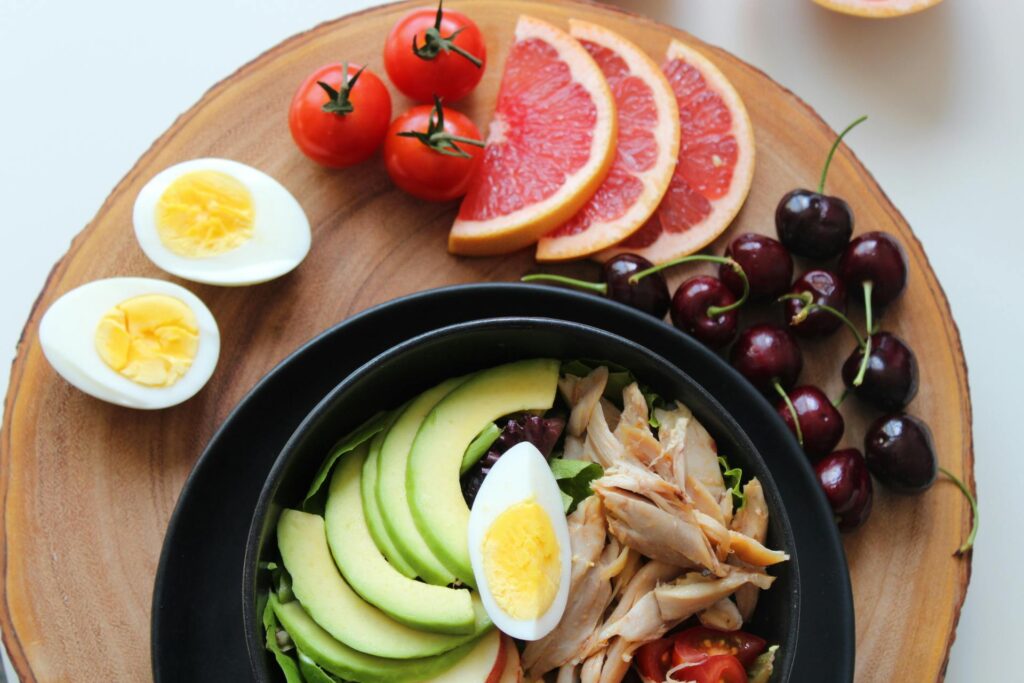
3. Understanding the Basics of Nutrition on a Budget
Knowing which foods offer the most nutritional bang for your buck is crucial. Although specific dietary needs vary, understanding core nutrients and food groups helps you prioritize cost-effective, healthy options.
3.1 Macronutrients: Protein, Carbohydrates, and Fats
- Protein: Key for muscle repair, immune function, and overall health. Budget-friendly protein sources include beans, lentils, eggs, canned tuna, and chicken thighs instead of chicken breasts. Tofu and tempeh are also cost-effective protein sources for plant-based diets.
- Carbohydrates: Provide energy for daily activities. Focus on complex carbs like whole grains (brown rice, oats, whole wheat pasta), potatoes, beans, and legumes. They’re often cheaper per serving than refined carbs, and they come with more fiber and micronutrients.
- Fats: Healthy fats are found in avocados, nuts, seeds, and certain oils (olive, canola). You can also find budget-friendly sources of healthy fats in peanut butter or by buying larger economy-sized tubs of quality oils.
3.2 Micronutrients: Vitamins and Minerals
Fresh produce can be expensive if bought out of season, but choosing seasonal fruits and vegetables not only improves flavor but also often brings down the cost. Frozen vegetables and fruits can also be a budget-friendly and highly nutritious choice—freezing locks in nutrients at their peak of freshness.
Look for produce high in vitamins A, C, and K—like carrots, sweet potatoes, and leafy greens—for immune support. Minerals like calcium, iron, and zinc are found in dairy or dairy alternatives, beans, nuts, seeds, and certain vegetables.
3.3 Balancing Your Plate
A balanced meal typically includes:
- A source of protein (beans, meat, fish, tofu, eggs, dairy, etc.).
- A high-fiber carbohydrate (whole grains, starchy vegetables, legumes).
- Plenty of non-starchy vegetables (broccoli, spinach, peppers, etc.).
- A healthy fat source, if the protein or carb source isn’t already rich in healthy fats.
When you focus on a variety of foods, you ensure you’re getting a wide spectrum of nutrients. Plus, variety helps keep meals interesting. Eating the same bland meal every day is a sure way to burn out and be tempted by takeout.

4. Crafting a Meal Plan That Fits Your Budget
A solid meal plan is one of the most effective ways to ensure you’re eating well and staying on financial track. By planning ahead, you eliminate last-minute takeout or impulse buys at the grocery store.
4.1 Setting Objectives for Your Meal Plan
Ask yourself:
- Are you trying to maintain, lose, or gain weight?
- Do you have specific health goals, like reducing sodium or sugar intake?
- How many meals do you need each day?
- Is there room for leftovers or do you prefer something new each meal?
Having these goals in mind will shape your meal planning, ensuring that you stay aligned with your personal health and financial objectives.
4.2 The Power of Batch Cooking and Meal Prepping
Cooking in batches can save both time and money. Prepare a large quantity of a base ingredient—like beans, lentils, brown rice, or roasted vegetables—and then use it in several different dishes throughout the week. Examples:
- Cook a large pot of beans for bean salads, soups, stews, or burrito fillings.
- Roast a tray of vegetables to toss into pasta, serve as a side dish, or blend into soup.
- Grill or bake chicken in bulk, and use slices in salads, wraps, or alongside roasted veggies.
4.3 Incorporating Leftovers Effectively
Leftovers don’t have to be boring. Transform them into completely new meals. For instance:
- Leftover roasted veggies can become a filling for omelets or a topping for pizza.
- Cooked rice or quinoa can become fried rice one day, then a grain bowl with fresh greens and a fried egg the next.
- Leftover beans can become hummus, a bean dip, or be added to a soup.
By recycling leftovers creatively, you reduce food waste and save money. Plus, you’ll often find that dishes taste even better on the second or third day as flavors meld.
4.4 Navigating Picky Eaters or Dietary Restrictions
If you have family members who are picky or have specific allergies or intolerances, meal planning becomes even more important. Focus on recipes that can be easily adapted. For example, prepare a base dish that is vegan, and then let others top it with cheese or add a side of meat. This approach allows everyone to enjoy a meal that meets their personal needs without cooking separate dishes for each individual.

5. Smart Grocery Shopping Tactics
Armed with a meal plan and budget, you’re ready to tackle the grocery store. However, stepping into a supermarket without a clear game plan can lead to impulsive buys and overspending. These strategies will help you stick to your list and keep costs low.
5.1 Make a Detailed Shopping List
Never go grocery shopping without a list. Outline exactly what you need for each planned meal, plus any pantry essentials you’ve run out of. Organize the list by sections of the store—produce, dairy, grains, etc.—to streamline your trip. This organization helps you avoid wandering aisles and grabbing items you don’t need.
5.2 Shop the Perimeter First
Most grocery stores are set up with fresh produce, dairy, meat, and bread around the outer perimeter. Processed and packaged foods typically occupy the center aisles. By starting on the perimeter, you can prioritize fresh staples before venturing into the center aisles for pantry items. This approach encourages healthier choices and reduces the temptation to grab unnecessary snacks.
5.3 Look at Unit Prices
Sometimes the cheapest product by sticker price isn’t actually the best deal. Compare unit prices (like price per ounce or per 100 grams) to see which brand or package size offers the best value. Often, buying in bulk or choosing store brands can significantly reduce costs without sacrificing quality.
5.4 Be Selective with Sales
While sales can be great for saving money, they can also lure you into buying items you don’t really need. Only take advantage of sales if it’s for something you already plan to use. Stocking up on a versatile pantry staple—like canned beans or whole wheat pasta—makes sense if it’s heavily discounted and you’ll use it before it expires. Purchasing non-perishable goods on sale is a time-tested way to avoid paying full price later.

6. Stretching Your Produce Dollar
Produce can become expensive, but it doesn’t have to if you use strategic approaches. Here are some ways to add more fruits and vegetables to your meals without overspending.
6.1 Seasonal Eating
Seasonal produce is often cheaper because it’s more abundant. During peak seasons, fruits and vegetables are not only more cost-effective but also fresher and tastier. Research your local growing seasons—some grocery stores, especially those that feature local farms, highlight seasonal deals to encourage customers to buy what’s most readily available.
6.2 Frozen Fruits and Vegetables
Frozen produce is frequently overlooked, but it’s a fantastic budget-friendly option. Since they’re flash-frozen at peak ripeness, frozen fruits and vegetables often retain the same nutritional value as fresh varieties—and sometimes even more if the fresh produce traveled long distances or sat on the shelf for days. Frozen vegetables are convenient in soups, stir-fries, and casseroles. Frozen fruits can be used in smoothies, oatmeal, or homemade desserts.
6.3 Buying in Bulk (and Storing Properly)
Some produce, like apples, carrots, onions, and potatoes, can last for weeks in cool, dry storage if you buy them in large bags or bushels. The key is proper storage. Keep potatoes and onions in a well-ventilated space away from direct sunlight. Refrigerate carrots and apples in crisper drawers to maintain freshness.
6.4 Utilizing Ugly or Imperfect Produce
Some stores or local markets sell “ugly” produce at a discount. These fruits and vegetables have cosmetic imperfections but are just as nutritious and flavorful. If your grocery store doesn’t offer them, check local farmers markets or community-supported agriculture (CSA) programs that sometimes bundle imperfect items. You’ll save money and help reduce food waste.

7. Maximizing Protein Sources on a Budget
Protein is a cornerstone of a healthy diet, but it can also be one of the more expensive grocery items—especially if you rely on premium cuts of meat. Here are tips to include high-quality protein sources without draining your wallet.
7.1 Affordable Animal Proteins
- Chicken Thighs vs. Chicken Breasts: Thighs tend to be cheaper, more flavorful, and have a bit more fat, which can enhance taste. They can be used in a variety of dishes, from curries to roasted meals.
- Ground Meats: Ground turkey or ground chicken is often cheaper than whole cuts, and it can be stretched by adding vegetables or grains.
- Canned Fish: Canned tuna and salmon provide a budget-friendly protein punch. They’re convenient for sandwiches, salads, and casseroles. Look for deals and stock up.
7.2 Plant-Based Proteins
If you’re open to plant-based meals, beans, lentils, and tofu can drastically cut protein costs. Other options include chickpeas, split peas, tempeh, seitan, and edamame. These foods often contain fiber and key vitamins that aren’t always present in meat-based meals.
7.3 Eggs and Dairy
Eggs are a powerhouse of protein and can be used in countless dishes—omelets, frittatas, scrambled on toast, or boiled as a snack. Cottage cheese, Greek yogurt, and plain yogurt can also provide an affordable protein boost.
7.4 Stretching Protein in Recipes
Consider recipes that combine a moderate amount of meat with beans or grains. For instance:
- Chili: Combine ground beef or turkey with plenty of beans.
- Stews: Use cubes of cheaper cuts of meat but add root vegetables, legumes, and whole grains to make it hearty.
- Stir-Fries: Use thin slices of meat and bulk up with vegetables, tofu, or scrambled egg.
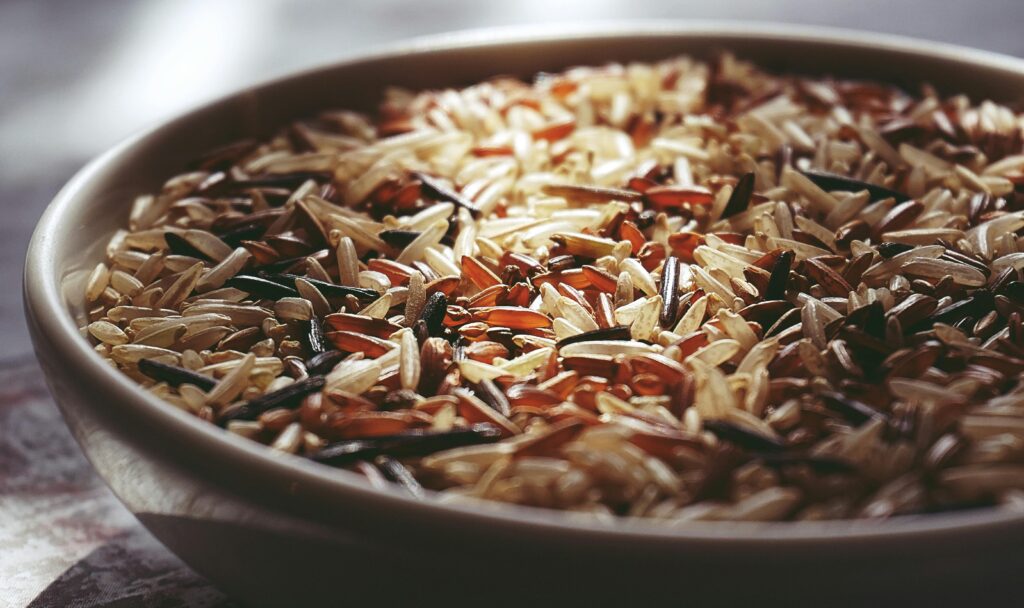
8. Stocking a Budget-Friendly Pantry
Your pantry is the backbone of your kitchen. Having versatile staples on hand makes last-minute meals easier and reduces the likelihood of ordering takeout.
8.1 Essential Dry Goods
- Whole Grains: Brown rice, oats, whole wheat pasta, quinoa, barley, and whole grain bread products.
- Legumes: Dried or canned beans (black, pinto, kidney, chickpeas), lentils, and split peas.
- Spices and Herbs: Salt, pepper, garlic powder, onion powder, paprika, oregano, basil, cumin, and curry powder. Opt for larger containers if you use them frequently.
- Nuts and Seeds: Peanuts, almonds, chia seeds, flaxseeds. You can buy these in bulk and store in airtight containers.
8.2 Canned and Jarred Essentials
- Tomatoes: Canned crushed tomatoes, tomato sauce, tomato paste, and diced tomatoes are bases for countless dishes.
- Broth or Stock: Vegetable, chicken, or beef broth for soups, stews, and sauces.
- Nut Butters: Peanut, almond, or sunflower seed butter for protein-packed snacks and meals.
- Sauces and Condiments: Soy sauce, vinegar, olive oil, and hot sauce.
8.3 Freezer Staples
- Frozen Vegetables and Fruits: Spinach, mixed vegetables, berries, mango chunks.
- Pre-cooked Grains and Beans: If you batch-cook and freeze them in portioned containers, you’ll have ready-to-use meal components.
- Budget-Friendly Proteins: Packages of chicken, fish, or ground meat bought in bulk and frozen until needed.
By keeping these items in stock, you’ll have immediate access to healthy meal building blocks. This can greatly reduce the temptation to rely on expensive, less nutritious convenience foods.
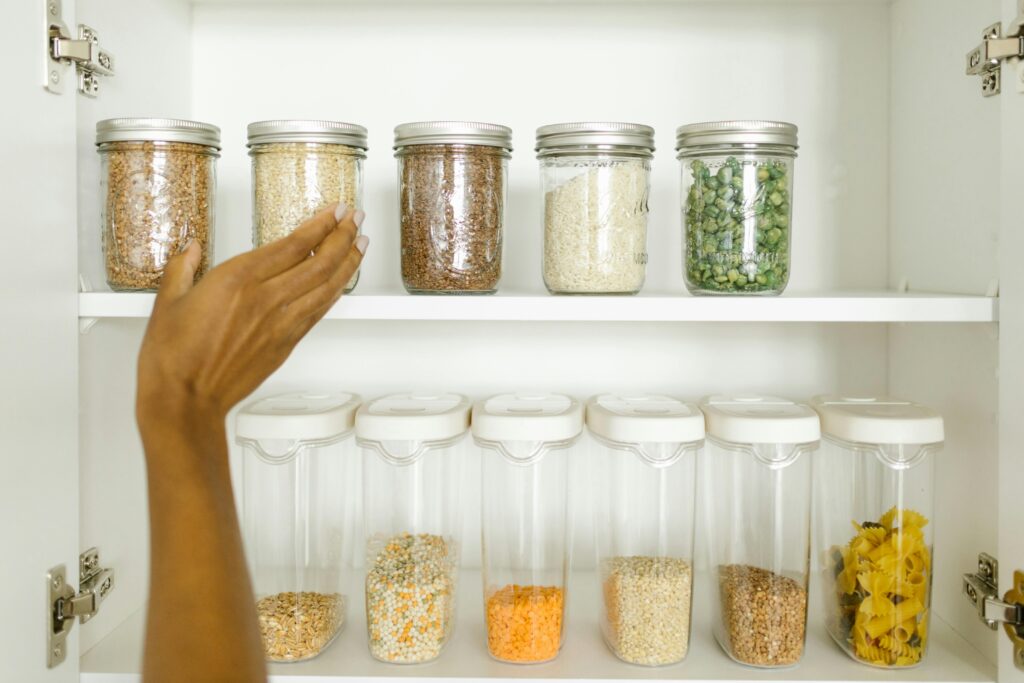
9. Buying in Bulk and Storing Correctly
Bulk buying can be a powerful strategy for saving money, but only if you store and use the products before they spoil.
9.1 Identifying What to Buy in Bulk
- Shelf-Stable Items: Rice, pasta, beans, oats, spices, and flours generally have long shelf lives.
- Freezer-Friendly Items: Meat, fish, bread, and certain vegetables can be frozen for extended periods.
9.2 Safe Food Storage Techniques
- Airtight Containers: Transfer dry goods (rice, flour, beans) into containers that seal completely. This prevents pests and keeps items fresh.
- Labeling: Use masking tape or sticky labels to mark the date you opened or froze an item. This ensures you use older supplies first and reduce waste.
- Batch Cooking and Freezing: If you buy a large package of meat, portion it into meal-sized bags to freeze. The same applies to cooked beans or grains.
9.3 Avoiding Storage Mistakes
- Don’t Freeze Produce Improperly: Certain vegetables need blanching before freezing, and some fruits do best when individually frozen on a tray before being stored in bags.
- Avoid Overbuying Perishables: Bulk buying perishable items like milk or fresh greens may not be economical if they spoil before consumption.
When done wisely, bulk buying can lead to substantial savings. Just be sure you have the kitchen space and the plan to manage your inventory properly.

10. Sales, Coupons, and Loyalty Programs
Taking advantage of deals and loyalty programs can stretch your budget further, but it’s important not to let marketing gimmicks lead you astray.
10.1 Digital Coupons and Apps
Many grocery stores have mobile apps that offer digital coupons, personalized deals, and rewards. Sign up for these if you regularly shop at the same store. You can also use couponing websites and apps that aggregate deals from various brands.
10.2 Loyalty Cards
Most major grocery chains offer loyalty cards that provide sale prices, accumulate points, or offer future discounts at checkout. While these programs can save money, always compare prices across different stores or online retailers. A loyalty program might not always guarantee the best deal.
10.3 Price Matching
Some stores match lower advertised prices from competitors. If you have proof of a lower price elsewhere (like a digital flyer), you may be able to get the same discount without traveling to multiple locations.
10.4 Balancing Effort vs. Savings
Couponing can become time-consuming, and some deals only save you a few cents. It’s essential to strike a balance between the time and effort you invest and the savings you get. Look for larger discounts on items you genuinely need rather than clipping every coupon available.
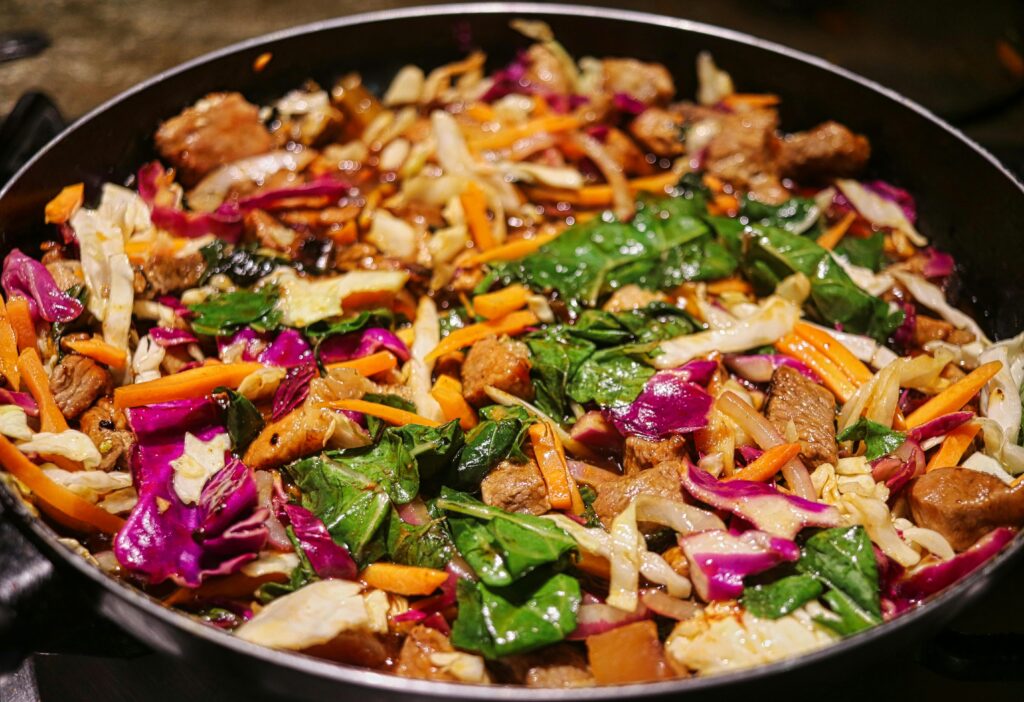
11. Cooking and Meal Preparation Tips
Cooking your own meals is one of the most direct ways to control costs while ensuring you eat nutritious foods. Even on a hectic schedule, there are methods to make this easier.
11.1 One-Pot and One-Pan Meals
Minimize cleanup and simplify cooking by making meals that come together in a single pot or pan. Examples:
- Sheet Pan Dinners: Roast a protein source alongside vegetables for a complete meal. Add spices or a marinade for flavor variety.
- Soups and Stews: Combine vegetables, grains, and proteins in a big pot for a hearty meal that often yields plenty of leftovers.
11.2 Slow Cookers and Pressure Cookers
- Slow Cooker: Great for inexpensive cuts of meat and for batch cooking. You can prepare soups, curries, stews, and even oatmeal with minimal hands-on time.
- Pressure Cooker or Instant Pot: Cuts down cooking time significantly for beans, rice, and tough cuts of meat. This allows you to buy more affordable ingredients that traditionally take longer to cook.
11.3 Stir-Fries and Skillets
A stir-fry is a quick and versatile meal that uses whatever vegetables you have on hand. Add a protein like tofu or chicken, some leftover grains, and a sauce (soy sauce, garlic, ginger) to create a balanced meal in minutes.
11.4 Spice It Up
Spices and herbs transform basic, budget-friendly ingredients into something special. Experiment with global flavors—like adding cumin and coriander to beans for a Middle Eastern flair, or ginger and garlic for an Asian-inspired dish. Versatility in spices reduces the boredom factor and keeps meals appealing.
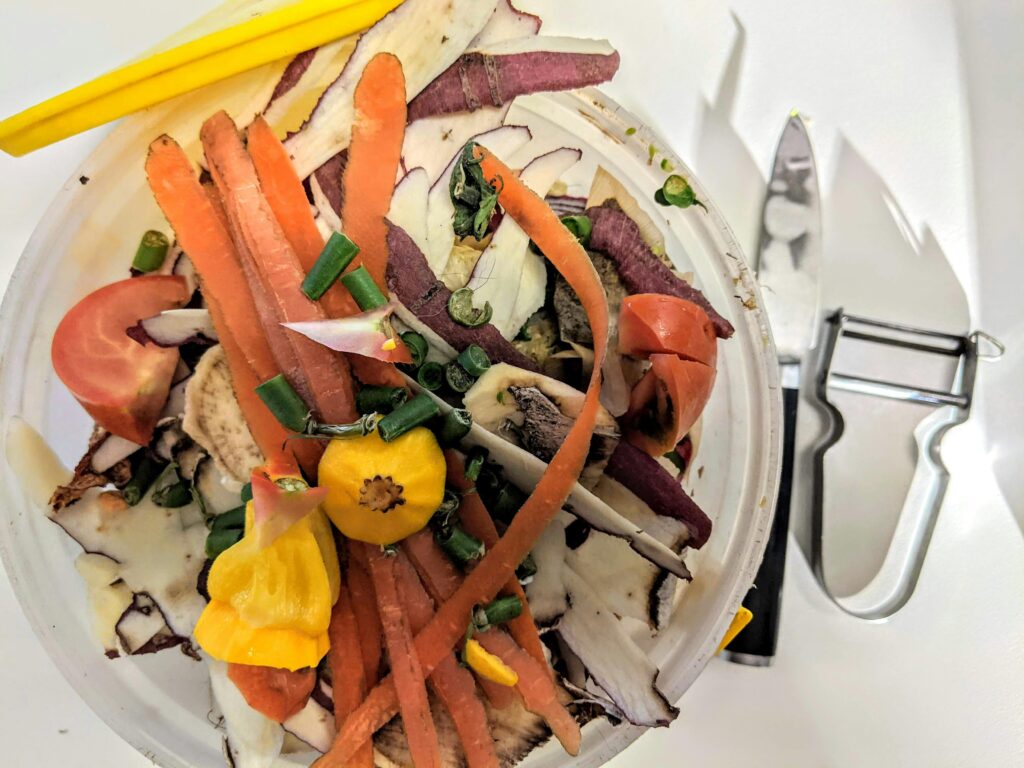
12. Reducing Food Waste
Food waste is a significant budget killer. If you frequently throw away ingredients that spoil before you use them, you’re essentially tossing money in the trash. Here’s how to minimize waste.
12.1 Shop with a Plan
A well-structured meal plan paired with a precise shopping list is the first line of defense against waste. Only buy what you know you’ll use in the coming week, unless you’re purchasing long-lasting pantry staples.
12.2 Proper Food Storage
- Use the Crisper Drawers: Many fruits and vegetables last longer when kept in the appropriate humidity setting in your fridge.
- First In, First Out (FIFO): Organize your fridge and pantry so that older items are front and center. This encourages you to use them before starting on newer purchases.
12.3 Creative Reuse
- Soup Stock: Keep a freezer bag for vegetable scraps (onion ends, carrot peels, celery leaves). When it’s full, simmer them with water for homemade vegetable stock.
- Bread Ends: Turn stale bread into croutons or bread crumbs.
- Leftover Herbs: Chop and freeze in olive oil or water using an ice cube tray.
12.4 Composting
If you have a yard or balcony space, consider composting food scraps. While this isn’t a direct money-saving tip, it reduces landfill waste and produces nutrient-rich soil if you grow your own vegetables or herbs. Growing some of your own produce can also lower grocery costs in the long run.

13. Eating Healthily Outside the Home
Even the best plans can be disrupted by a busy day away from home. Whether it’s a long commute, a hectic work schedule, or social events, eating out can blow your budget. Here’s how to mitigate those costs.
13.1 Pack Your Lunch
Preparing and packing your lunch is far cheaper and often healthier than buying cafeteria or restaurant meals. Make it a habit:
- Use Leftovers: Turn the previous night’s dinner into lunch. Pasta, stir-fries, and soups are easy to reheat.
- Simple Lunch Bowls: Combine a grain, a protein source, and vegetables. Top with a quick dressing or sauce.
13.2 Healthy Snacks on the Go
Avoid pricey vending machine snacks. Stock up on portable items like nuts, seeds, fruit, yogurt cups, or homemade granola bars. These snacks offer better nutrition and cost less per serving.
13.3 Special Occasions and Social Events
Life includes celebrations, and it’s unrealistic to never dine out. Set aside a small portion of your budget for occasional indulgences. Consider sharing dishes or ordering an appetizer as your meal to keep costs reasonable. Alternatively, you can invite friends over for a potluck. This way, everyone shares in the cooking expense and effort, and you can control healthier menu options.

14. Additional Tips and Strategies
No two households are the same, and no single set of rules applies to everyone. However, these extra pointers may help you tailor your grocery strategies more effectively.
14.1 Experiment with Meatless Meals
Going entirely vegetarian or vegan isn’t for everyone. However, reducing your meat intake—say, by instituting “Meatless Mondays”—can significantly lower your grocery bill. Plus, plant-based diets can be beneficial for health and the environment.
14.2 Grow What You Can
Even a small windowsill herb garden can save you money on fresh herbs. If you have access to more space, you could grow simple produce like tomatoes, peppers, or leafy greens. Gardening can be a fun hobby that yields not only food but also satisfaction and a deeper connection to what you eat.
14.3 Shop with Cash (or a Prepaid Card)
If you struggle with sticking to a budget, bring only the amount of cash you’ve allocated for groceries. Alternatively, use a separate debit or prepaid card loaded with your grocery allowance. This physical limitation can help curb impulse buys.
14.4 Look for Community Resources
Food pantries, discount grocery programs, and community gardens can be valuable resources if you’re on a very tight budget. Also, co-ops or CSAs might offer subsidized shares for low-income households, providing you with fresh, locally grown produce at a reduced cost.

15. Putting It All Together: A Sample Budget Grocery Plan
Below is a hypothetical 1-week grocery plan that shows how to integrate many of the strategies discussed. While you’ll need to adapt it to your dietary preferences and local grocery prices, it can serve as inspiration.
15.1 The Grocery List
- Produce: 1 bag of onions, 2 bell peppers, 1 bunch of spinach, 1 head of lettuce, 3 carrots, 2 sweet potatoes, 1 bunch of bananas, 1 bag of frozen mixed vegetables
- Proteins: 1 dozen eggs, 1 package of chicken thighs, 1 package of tofu, 2 cans of tuna, dried lentils
- Grains and Starches: 1 bag of brown rice, 1 bag of oats, 1 package of whole wheat pasta
- Other Essentials: 1 container of plain yogurt, 1 jar of peanut butter, tomato sauce, vegetable or chicken broth, frozen fruit for smoothies
- Spices and Pantry: Salt, pepper, garlic powder, chili powder, olive oil
15.2 The Meals
- Breakfasts:
- Oatmeal with banana slices
- Greek yogurt parfaits with frozen berries
- Scrambled eggs with spinach on whole wheat toast
- Lunches:
- Lentil soup with carrots, onions, and bell peppers (bulk-cooked for multiple days)
- Tuna salad wraps with lettuce
- Leftover chicken or tofu stir-fry with brown rice
- Dinners:
- Roast chicken thighs with sweet potatoes and onions
- Whole wheat pasta with a simple tomato sauce, spinach, and tofu crumbles
- Stir-fry with chicken (or tofu), frozen mixed vegetables, and brown rice
- Veggie-packed omelet using leftover vegetables and eggs
- Snacks:
- Peanut butter on apple slices (buy apples if your budget allows, or use bananas)
- Carrot sticks with hummus (if you can make your own hummus, even better)
- Yogurt topped with leftover frozen fruit
15.3 Adapting and Personalizing
- If you’re vegetarian, omit the chicken and tuna and rely on lentils, tofu, eggs, dairy, and legumes.
- If you need more protein, add extra eggs or a larger portion of tofu or chicken.
- If you have more budget flexibility, explore fresh fruits like berries or purchase premium items like salmon or specialty cheeses.
This example demonstrates that a variety of meals can be put together on a limited budget, especially if you batch-cook items and use spices to keep flavors interesting.
16. Conclusion: Building Habits for Long-Term Success
Healthy grocery shopping on a budget isn’t just a one-time initiative—it’s a skill and a habit that you refine over time. As your confidence in meal planning, cooking, and budgeting grows, you’ll discover creative ways to enjoy meals that are both delicious and nourishing. By:
- Establishing a realistic budget.
- Learning basic nutrition principles.
- Mastering meal planning and batch cooking.
- Shopping smart, using sales and loyalty programs.
- Storing foods properly to minimize waste.
You can take control of both your health and your finances. The money you save, combined with the health benefits of a balanced, nutrient-dense diet, creates a positive cycle that supports your well-being.
Remember, it’s okay to start small. You don’t need to overhaul your entire diet or cooking routine overnight. Each small step—like cooking one additional meal at home, or adding an extra vegetable to your dinner—can have a cumulative effect over weeks and months. Celebrate your victories, no matter how small, and keep refining your strategies as you learn what works best for you.
Final Tip: Stay flexible and adaptable. Life circumstances, like changes in job schedules or unexpected financial challenges, might require you to adjust your grocery plan. The more open you are to experimenting with new recipes, ingredients, or shopping habits, the more resilient you’ll be in maintaining a healthy diet even under constraints. Over time, your mastery of healthy grocery shopping on a budget can become second nature, ensuring both your wallet and your body remain in great shape.

